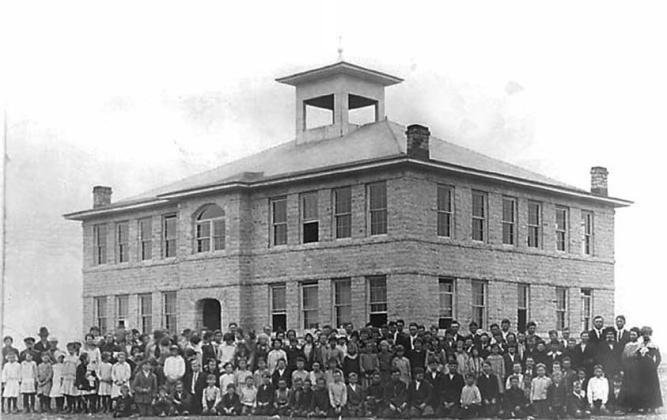Alexander’s respected historian, Leon Lewis sat down with a reporter from the Dublin Progress in 1954. The story he told was published in an article titled “The Rise and Fall of Alexander.” That story is summarized here.
Alexander’s mushroom growth began just about the time that the Texas Central Railroad was arriving in Erath County. The officials of the railroad must have had visions of a large town when they started work. The railroad purchased 240 acres from Billie Keith and laid out what the town should look like. Lots were sold to business entrepreneurs and individuals for buildings and dwellings. The town got its name from the contractor Alexander Hutchison. He was the railroad official who built the mile of railroad where the community now stands. (Dublin Progress, May 14, 1954) The town was surveyed into business and residential lots. The best lots were located close to the railroad station. Streets east and west were designated with street numbers. Streets north of fifth street, the present highway through town, were given names such as Hutchison, Josephine, Algears, Orleans, St. Charles, Jackson and Alverina. The first merchant to arrive in Alexander was Wes Brule who came in ahead of the railroad and spread out his wares in a tent. After the railroad started shipping supplies, he built a frame store.
An older settlement called Harper’s Mill was located close by on Green’s Creek. About the time the railroad came through, community members picked up everything and moved to Alexander.
The town was also known for Rube Burrow and his gang. In this part of Texas they were known for train and bank robberies. Many innocent men were hung because of the gang until the Texas Rangers arrived. The Rangers stayed over a year until law and order was restored.
The town continued to grow and at one time had 28 businesses and a population of almost one thousand. Businesses included Cage and Gillentine, General Merchandise, a flour mill, three lumber yards, Bower Hardware, Bateman’s General Store, Thompson’s Grocery, W. B. Hammit Grocery and a dry goods store. The town also had three saloons, three barber shops, two blacksmith shops, two hotels and three rooming and boarding houses. A newspaper, the Alexander Times was there for a brief time.
With Alexander having the first railroad connection in Erath County, much of its early business was freight and mail destined for Stephenville and other locations. The first signs of decline happened when the Stephenville North and South Railroad was built through town; much of that freight and mail business was reduced since freight could continue its way by rail.
A fire burned about half of the businesses in 1893. Most of them were built back with more permanent buildings. In 1903 an election outlawed the sale of spirits and closed the 3 saloons in town. Then a disastrous flood took place in April 1908 that washed out much of the railroad beds andbridges. Thedamage was so extensive that the Stephenville North and South railroad was partly sold to the St. Louis and Southwestern railroad (The Cotton Belt). It was abandoned in 1934.
The first bank in Alexander was the Riddle Exchange Bank. It was built in 1907 during the boom as Alexander’s second railroad was built. Its name was changed to the Alexander State Bank. A new bank building was built in 1911. It was closed in 1926.
The death blow to the town happened on April 11, 1932 as a fire destroyed all of the businesses in town. Fire fighting efforts by the townspeople were hopeless as the fire was already well underway when it was discovered. Those who knew Alexander during its heyday believe that had fate been different, Alexander would be a major town in the county. (Dublin Progress, As told by Leon Lewis, Alexander Historian, May 14, 1954)


